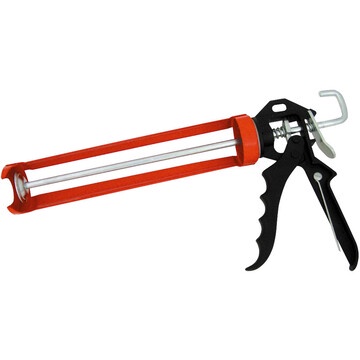Sealant application is a critical aspect of construction and home improvement projects, requiring precision, efficiency, and the right tools for the job. Among the essential tools for sealant application are silicone guns and cartridge guns, which provide the means to dispense sealants accurately and effectively. In this comprehensive guide, we delve into the world of sealant application, exploring the differences between silicone guns and cartridge guns, their uses, and tips for mastering their operation.
Understanding Silicone Guns and Cartridge Guns
Silicone guns and cartridge guns are handheld tools designed to dispense sealants and adhesives from cartridges. While they serve the same purpose, there are some key differences between the two:
-
Silicone Gun: A silicone gun, also known as a caulking gun, is a manual tool that operates by squeezing a trigger mechanism to apply pressure to the cartridge, forcing the sealant or adhesive out through the nozzle. Silicone guns are typically used for smaller-scale projects and applications that require precise control over the flow of sealant.
-
Cartridge Gun: A cartridge gun, on the other hand, is a more heavy-duty and versatile tool that operates using a ratcheting mechanism to apply pressure to the cartridge. Cartridge guns are designed to accommodate larger cartridges and dispense sealants with greater force and efficiency, making them suitable for larger-scale projects and professional applications.
Uses of Silicone Guns and Cartridge Guns
Silicone guns and cartridge guns are indispensable tools for a wide range of applications in construction, home improvement, and DIY projects. Some common uses include:
-
Sealing and Caulking: Silicone guns and cartridge guns are used to apply sealants and caulk to seal joints, gaps, and seams in various building materials, including wood, metal, glass, and masonry. They are commonly used for sealing windows, doors, skylights, and exterior cladding to prevent air and water infiltration.
-
Bonding and Adhering: In addition to sealing, silicone guns, and cartridge guns are used to apply adhesives and bonding agents for attaching materials, such as tiles, trim, molding, and panels. They are essential tools for installing fixtures, countertops, and other building components in construction and renovation projects.
-
Automotive and Marine Applications: Silicone guns and cartridge guns are also used in automotive and marine applications for sealing and bonding components, such as windshields, windows, hatches, and trim. They are indispensable tools for maintaining watertight seals and preventing leaks in vehicles, boats, and other marine vessels.
Tips for Mastering Silicone Guns and Cartridge Guns
To achieve professional-quality results with silicone guns and cartridge guns, consider the following tips:
-
Choose the Right Gun: Select a silicone gun or cartridge gun that is appropriate for the size and type of cartridge you will be using. Consider factors such as cartridge capacity, gun construction, and ergonomic design to ensure comfort and efficiency during use.
-
Prepare the Surface: Before applying sealant or adhesive, ensure that the surface is clean, dry, and free of dust, debris, and contaminants. Use a suitable primer or solvent to prepare porous surfaces for optimal adhesion.
-
Cut the Nozzle: Use a sharp utility knife to cut the nozzle of the cartridge at a 45-degree angle to the desired bead size. Start with a small opening and gradually increase the size as needed to control the flow of sealant or adhesive.
-
Practice Proper Technique: Hold the gun at a slight angle to the surface and apply steady pressure to the trigger while smoothly moving the gun along the joint or seam. Use a consistent speed and pressure to achieve a uniform bead of sealant or adhesive.
-
Clean Up Excess Sealant: Use a damp cloth or sponge to wipe away any excess sealant or adhesive before it dries. For silicone sealants, use a silicone remover or solvent to clean up any residue from surfaces and tools.
Conclusion
Silicone guns and cartridge guns are essential tools for sealant application in construction, home improvement, and DIY projects. Whether you're sealing joints, bonding materials, or installing fixtures, having the right gun for the job is crucial for achieving professional-quality results. By understanding the differences between silicone guns and cartridge guns, knowing their uses, and following proper techniques, you can master the art of sealant application and tackle any project with confidence and precision.


No comments yet